Model Context Protocol (MCP) finally gives AI models a way to access the business data needed to make them really useful at work. CData MCP Servers have the depth and performance to make sure AI has access to all of the answers.
Try them now for free →Integrate with Live SAP Ariba Source Data in MuleSoft (via CData Connect Cloud)
Use CData Connect Cloud to connect to SAP Ariba Source from the MuleSoft Anypoint Platform to integrate live SAP Ariba Source data into custom reports and dashboards.
The MuleSoft Anypoint Platform enables the building, deployment, and management of APIs and integrations, facilitating seamless connectivity across applications and systems. When combined with CData Connect Cloud, it provides access to SAP Ariba Source data for visualizations, dashboards, and more. This article explains how to use CData Connect Cloud to create a live connection to SAP Ariba Source and how to connect and access live SAP Ariba Source data from the MuleSoft Anypoint Platform.
Prerequisites
Before configuring and using MuleSoft with CData Connect Cloud, you must first connect a data source to your CData Connect Cloud account. For more information, see the Connections section.
Additionally, you need to generate a Personal Access Token (PAT) on the Settings page. Be sure to copy it down, as it serves as your password during authentication.
Configure SAP Ariba Source Connectivity for MuleSoft
Connectivity to SAP Ariba Source from MuleSoft is made possible through CData Connect Cloud. To work with SAP Ariba Source data from MuleSoft, we start by creating and configuring a SAP Ariba Source connection.
- Log into Connect Cloud, click Connections and click Add Connection
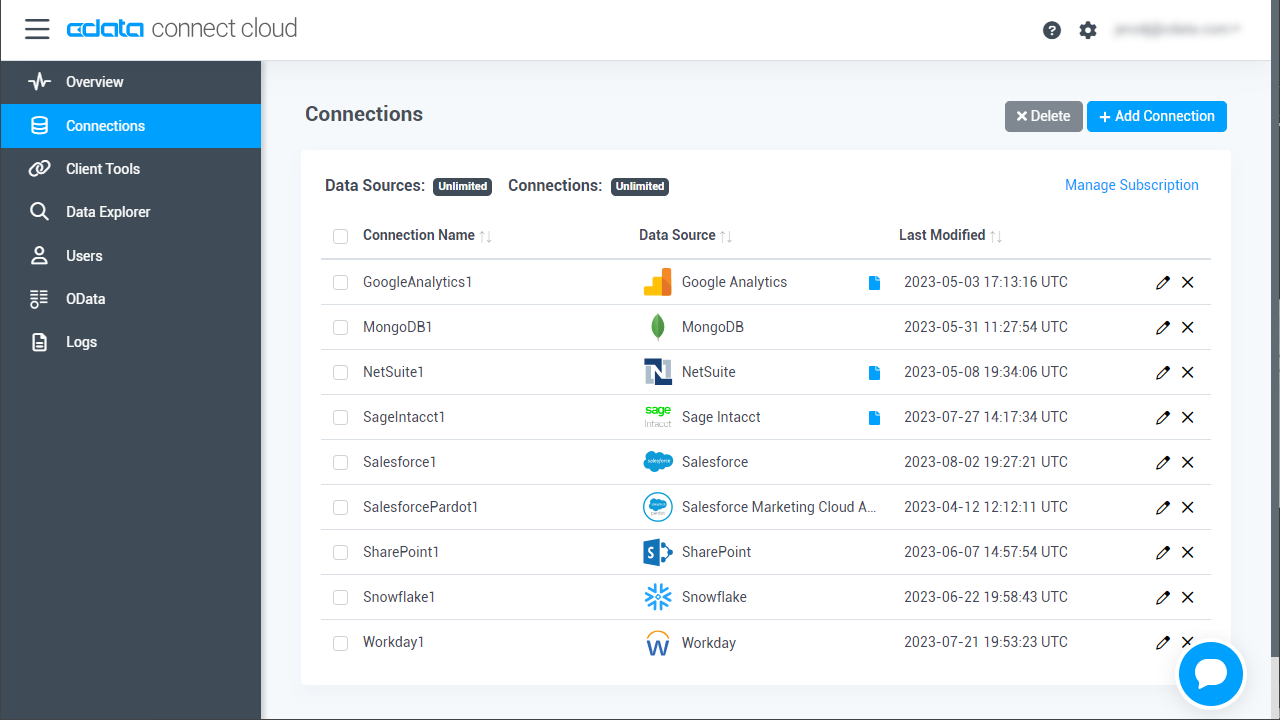
- Select "SAP Ariba Source" from the Add Connection panel
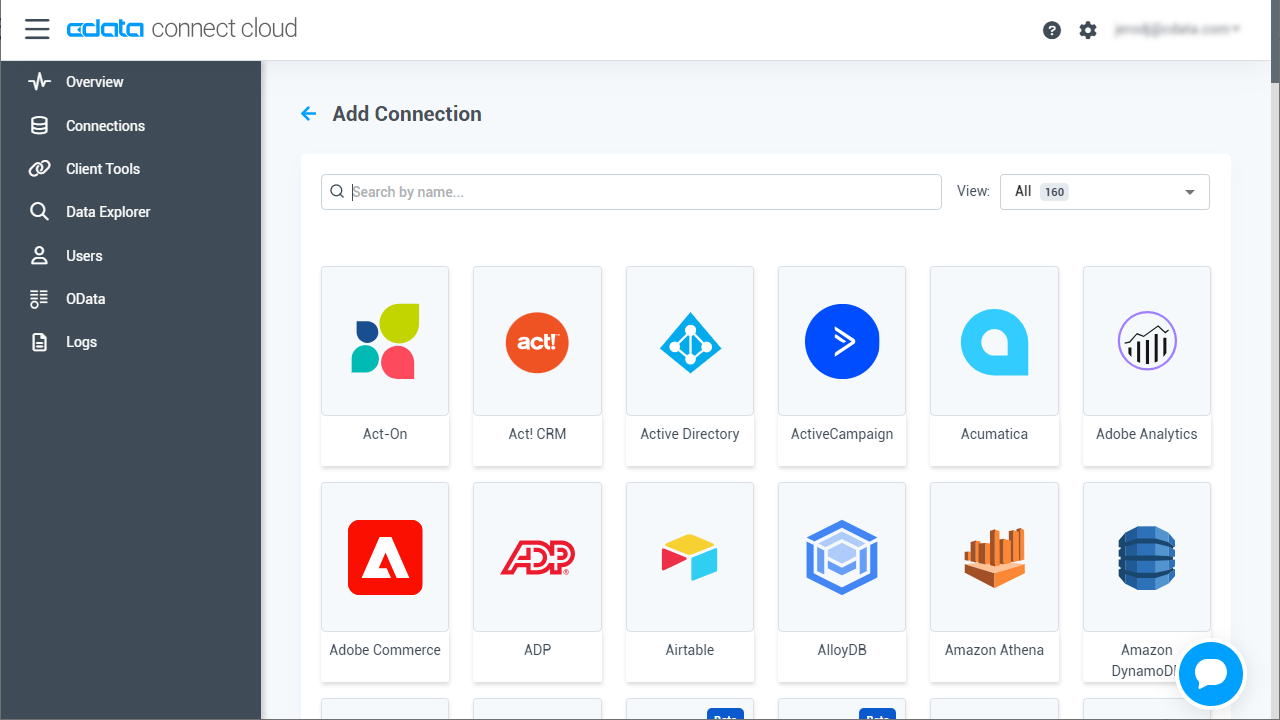
-
Enter the necessary authentication properties to connect to SAP Ariba Source.
In order to connect with SAP Ariba Source, set the following:
- API: Specify which API you would like the provider to retrieve SAP Ariba data from. Select the Supplier, Sourcing Project Management, or Contract API based on your business role (possible values are SupplierDataAPIWithPaginationV4, SourcingProjectManagementAPIV2, or ContractAPIV1).
- DataCenter: The data center where your account's data is hosted.
- Realm: The name of the site you want to access.
- Environment: Indicate whether you are connecting to a test or production environment (possible values are TEST or PRODUCTION).
If you are connecting to the Supplier Data API or the Contract API, additionally set the following:
- User: Id of the user on whose behalf API calls are invoked.
- PasswordAdapter: The password associated with the authenticating User.
If you're connecting to the Supplier API, set ProjectId to the Id of the sourcing project you want to retrieve data from.
Authenticating with OAuth
After setting connection properties, you need to configure OAuth connectivity to authenticate.
- Set AuthScheme to OAuthClient.
- Register an application with the service to obtain the APIKey, OAuthClientId and OAuthClientSecret.
For more information on creating an OAuth application, refer to the Help documentation.
Automatic OAuth
After setting the following, you are ready to connect:
-
APIKey: The Application key in your app settings.
OAuthClientId: The OAuth Client Id in your app settings.
OAuthClientSecret: The OAuth Secret in your app settings.
When you connect, the provider automatically completes the OAuth process:
- The provider obtains an access token from SAP Ariba and uses it to request data.
- The provider refreshes the access token automatically when it expires.
- The OAuth values are saved in memory relative to the location specified in OAuthSettingsLocation.
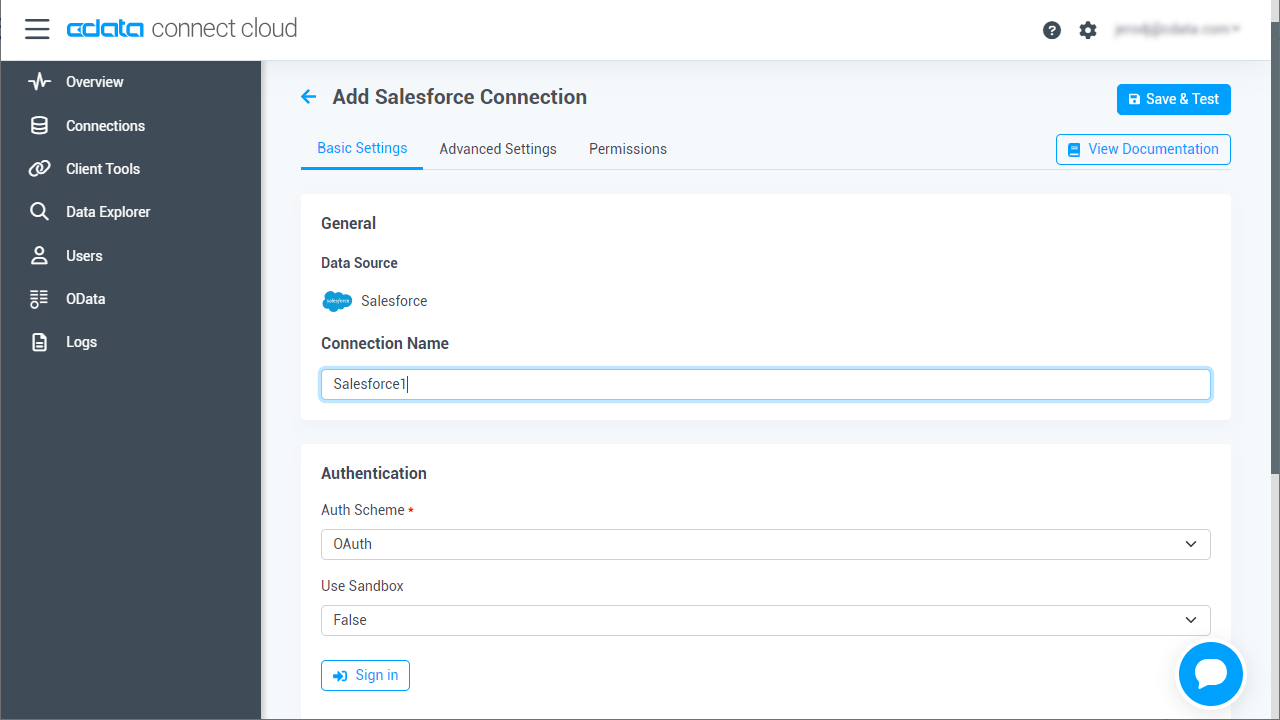
- Click Create & Test
- Navigate to the Permissions tab in the Add SAP Ariba Source Connection page and update the User-based permissions.
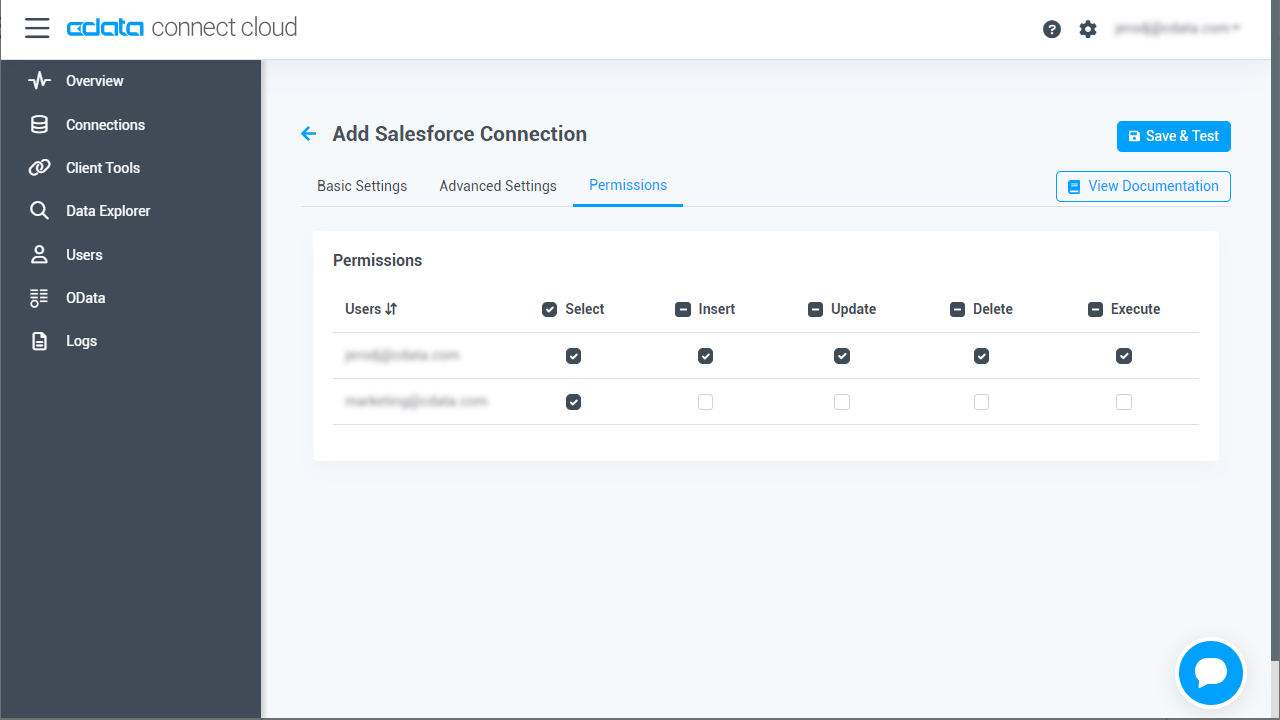
With the connection configured, you are ready to connect to SAP Ariba Source data from MuleSoft.
Connecting to CData Connect Cloud
Follow these steps to establish a connection from Mulesoft to CData Connect Cloud through the JDBC driver:
- Download and install the CData Connect Cloud JDBC driver.
- Open the Client Tools page of CData Connect Cloud.
- Locate MuleSoft and click on Download for Mac/Windows/Linux.
- Download and run the setup file.
- When the installation is complete, the JAR file can be found in the installation directory (inside the lib folder).
- Log into Mulesoft Anypoint Studio or launch the desktop application.
- Create a new Mulesoft project.
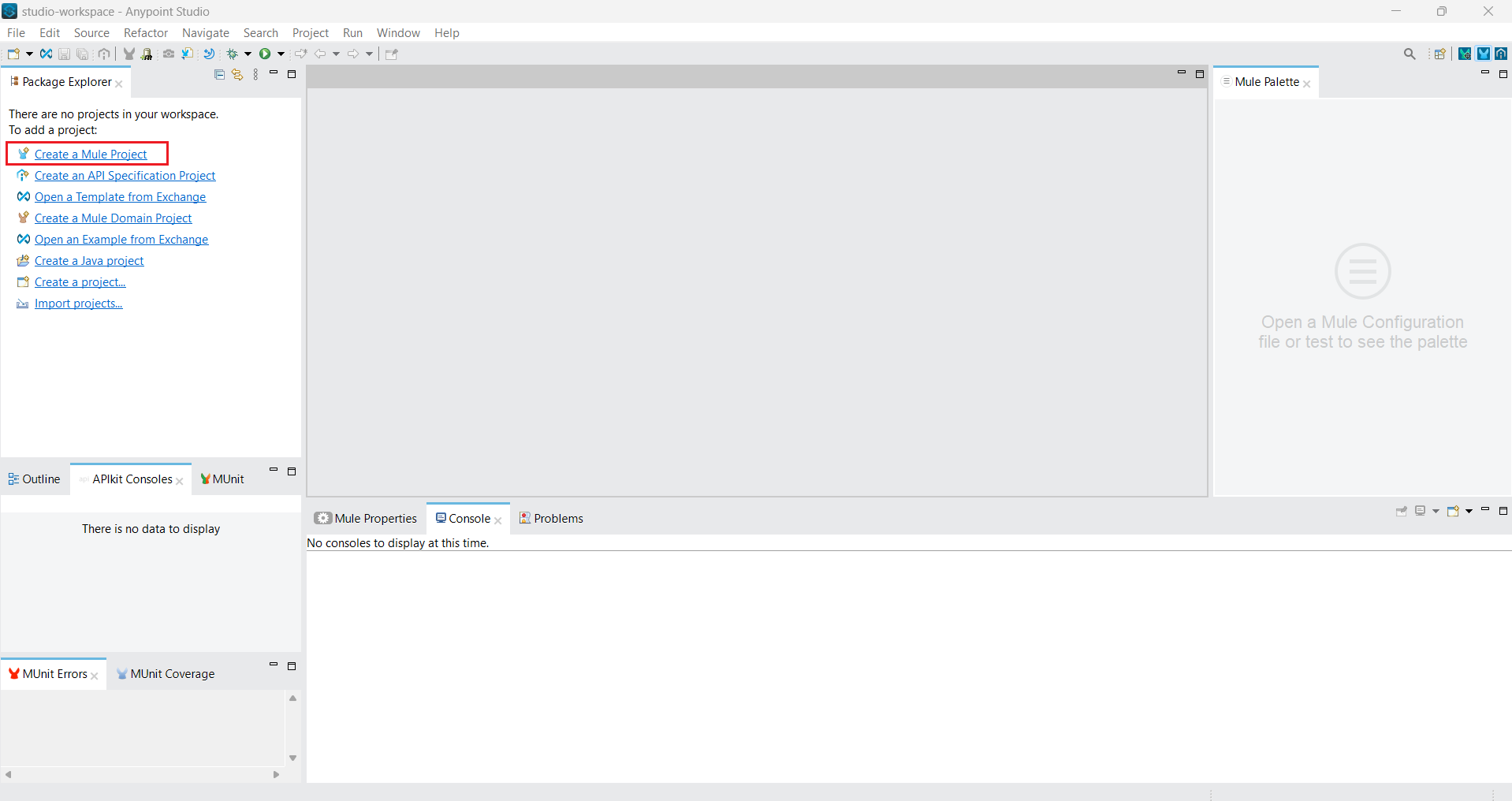
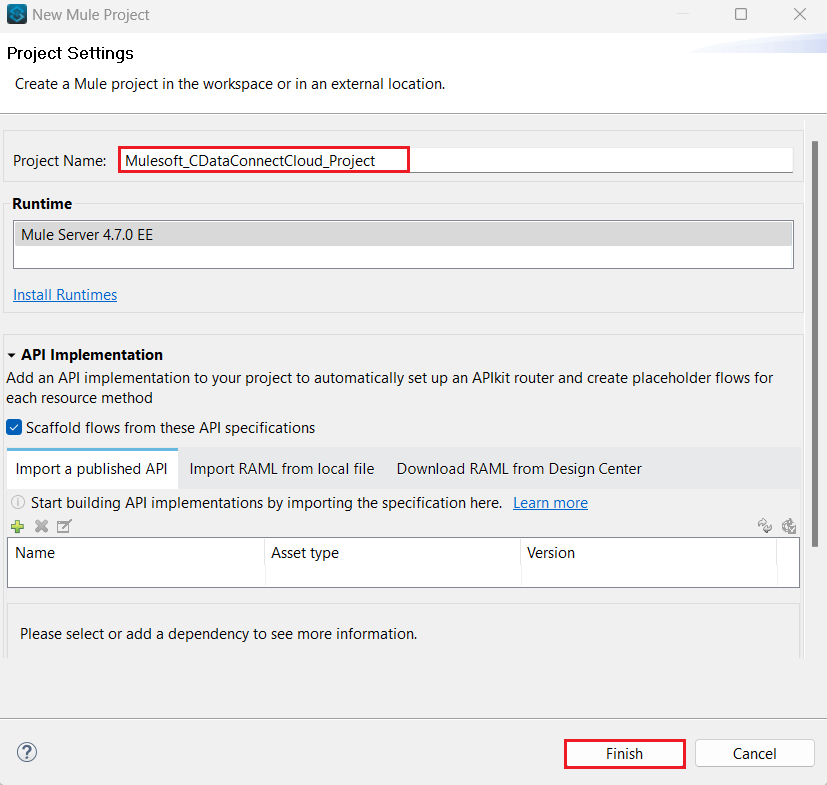 The new project appears in a project folder.
The new project appears in a project folder.
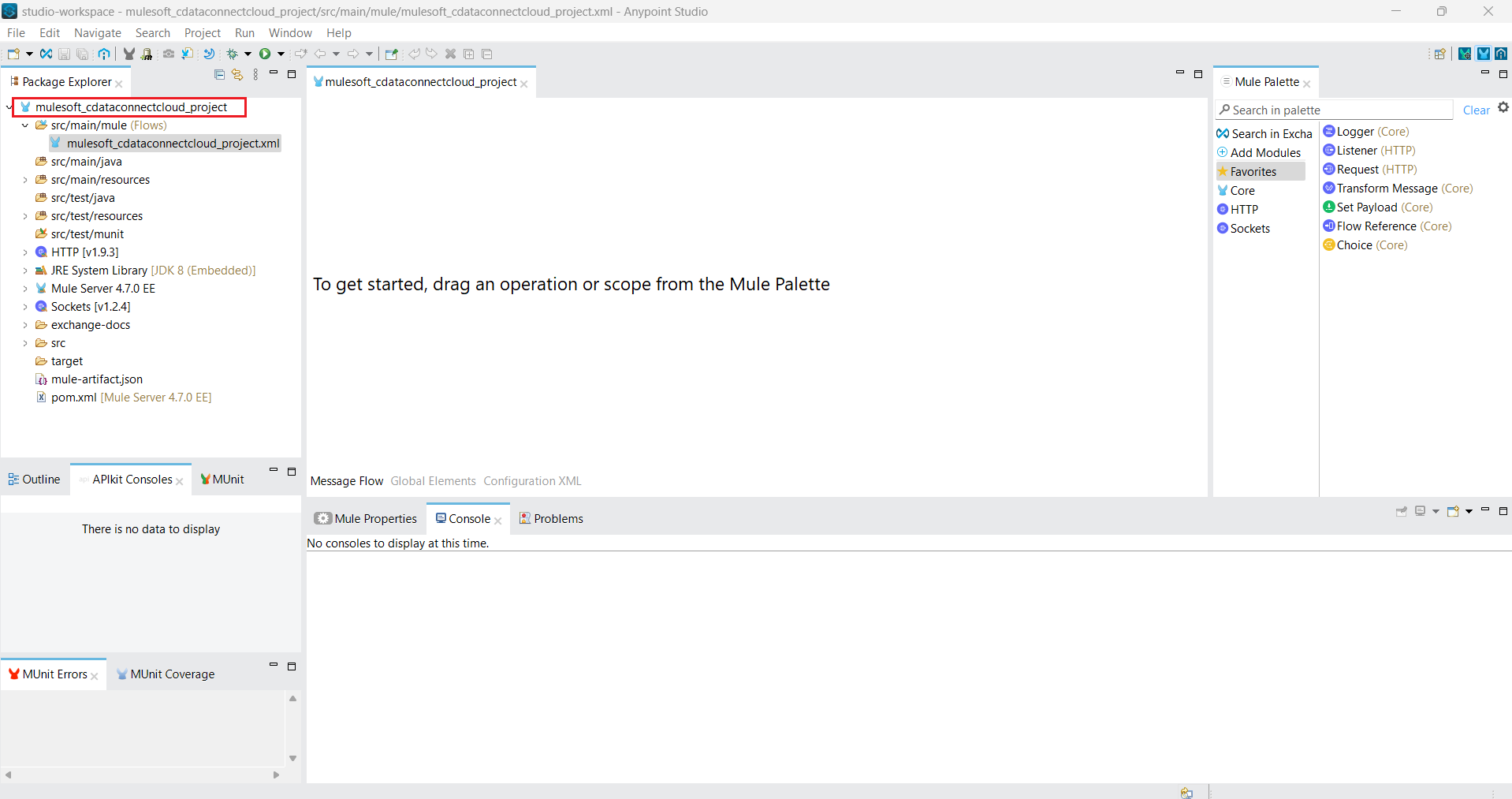
- In the Mule Palette located on the right, drag an HTTP Listener to the Message Flow area.

- Click on the HTTP Listener to configure it.
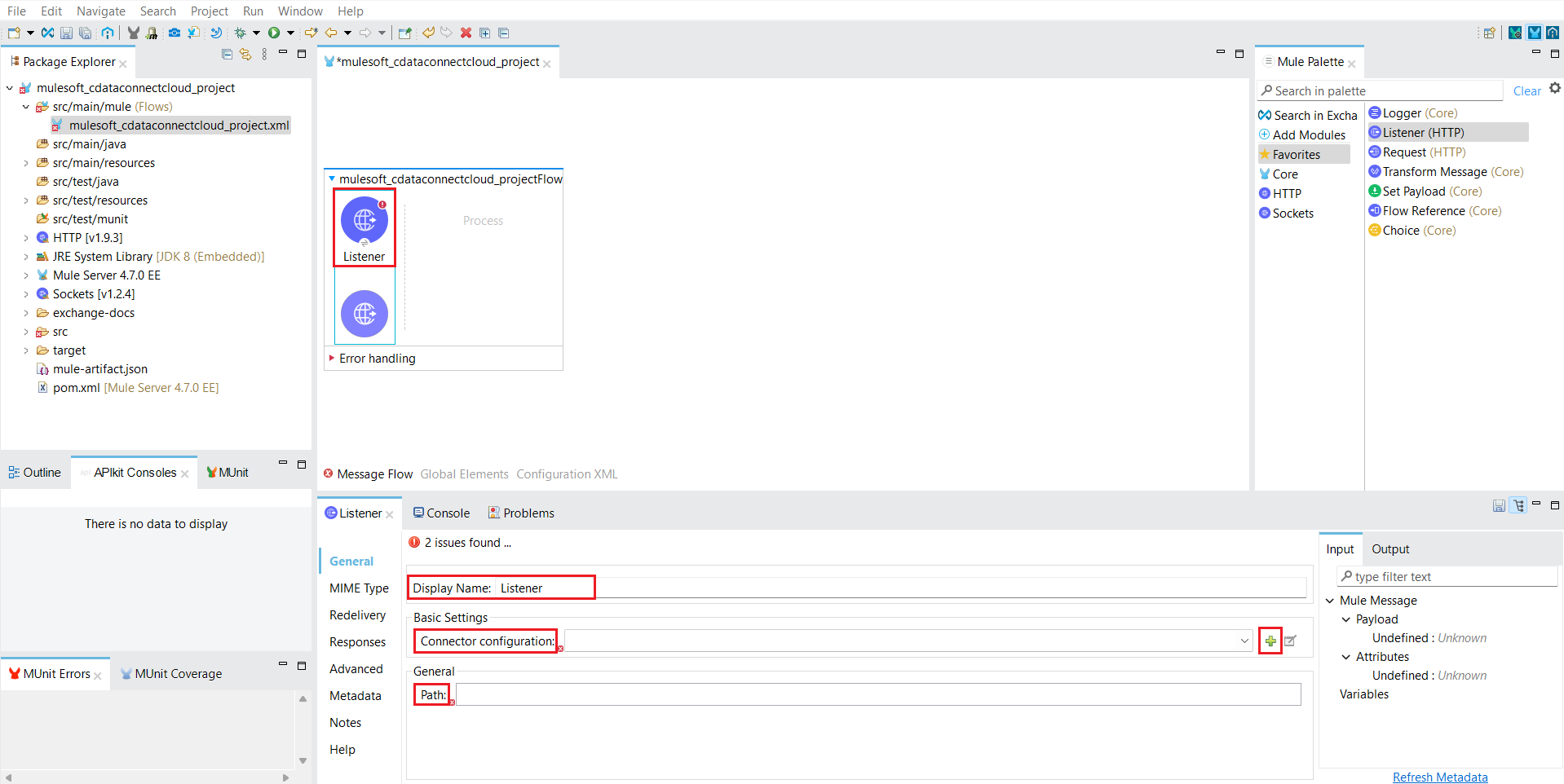
- Click the + sign on the right of Connector configuration. The HTTP Listener config dialog appears.
- Configure the HTTP Listener, providing a Port on which to query your data, and click OK.
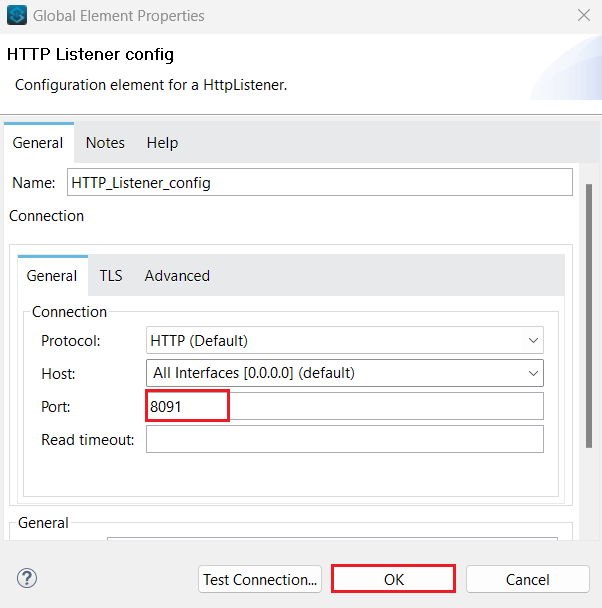
- Provide a path on which to perform the actions. The HTTP Listener is now configured.

- In the Mule Palette on the right, type database in the search bar.
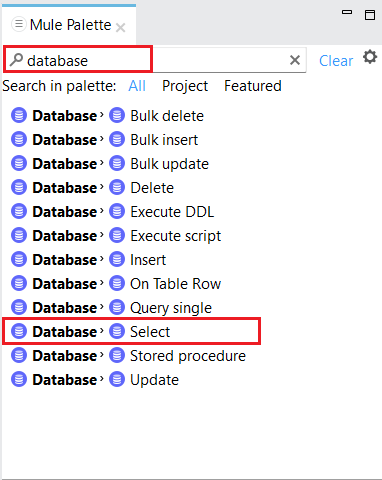
- Drag the database operation you want to perform to the Message Flow area. For this example, we choose Select.
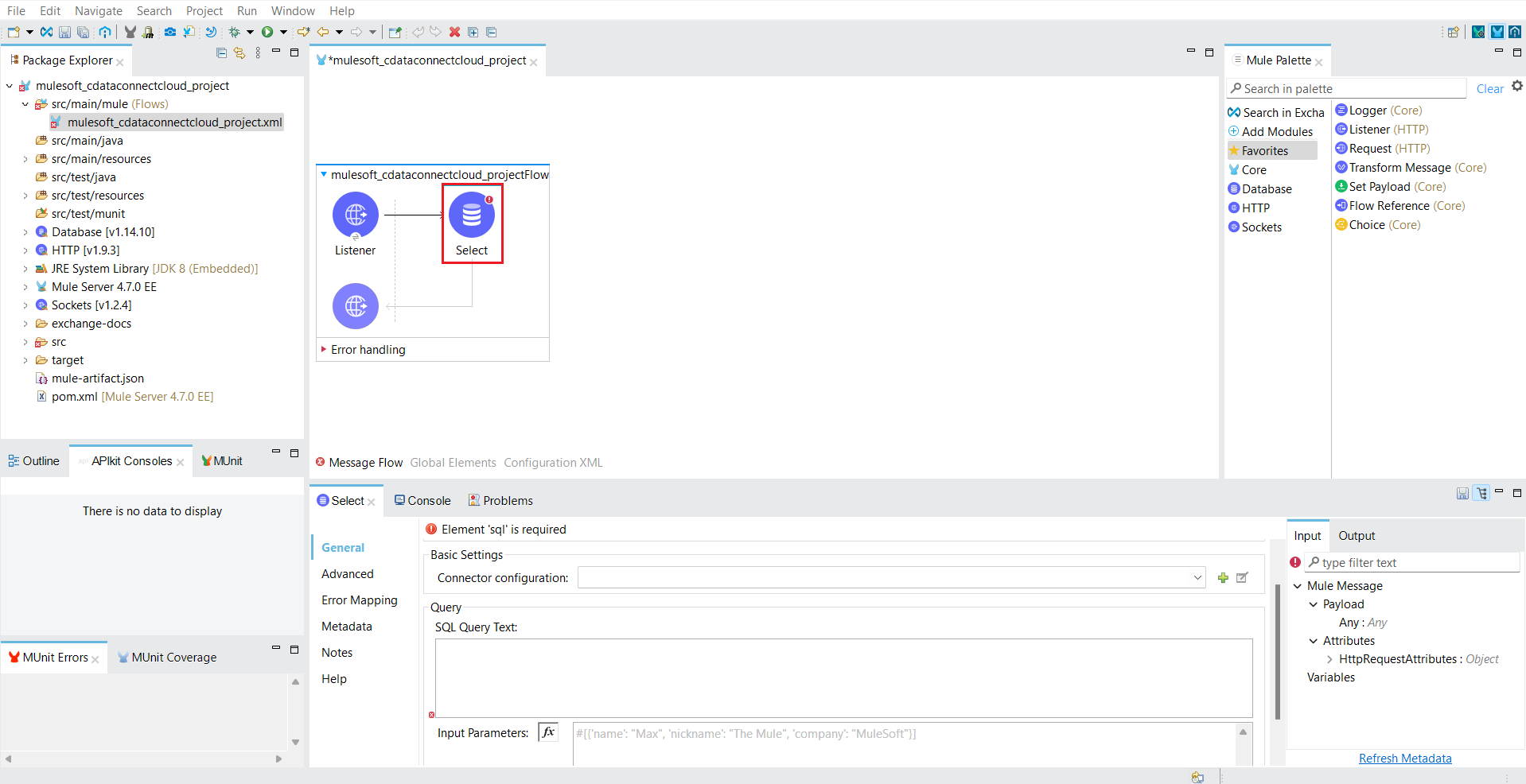
- Select Generic Connection from the Connection dropdown in the Database Config dialog.
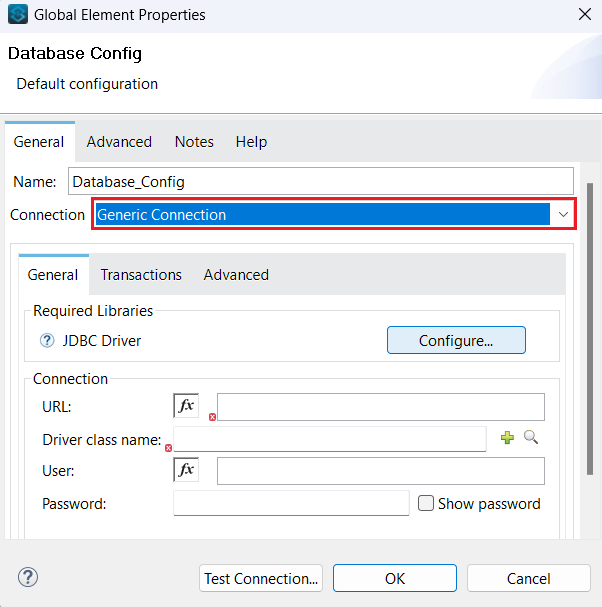
- Click the Configure button to configure the JDBC driver. Select Use local file from the drop-down list.
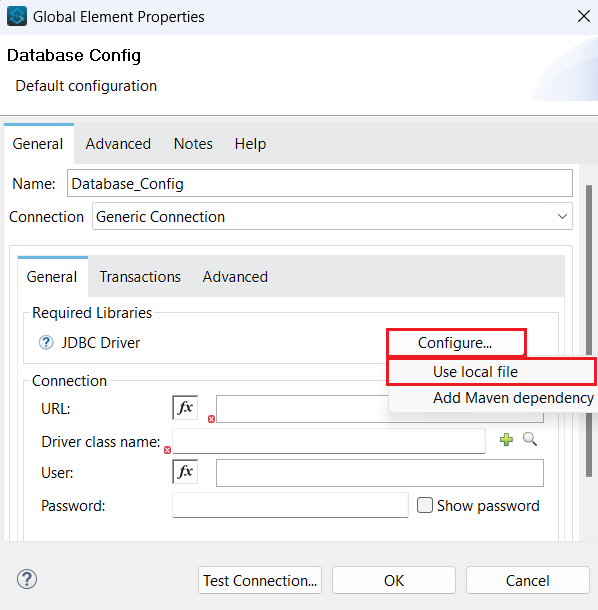
- Locate the CData Connect Cloud JAR file from the JDBC driver installation and click OK.
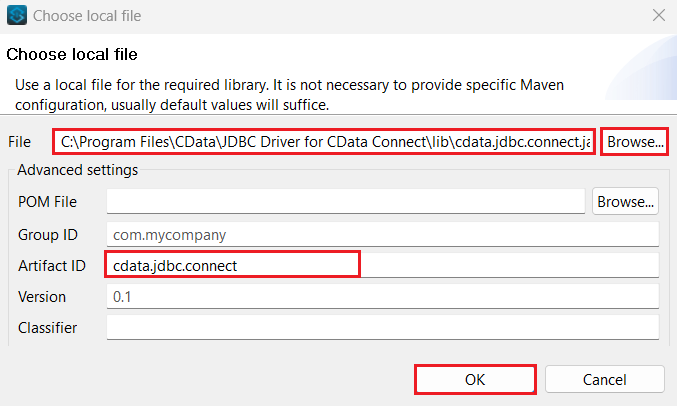
- Provide the following information:
- URL: the URL for the connection, for example:
jdbc:connect:Authscheme=Basic;user=username;password=passwordNote: the password is the PAT created in the Prerequisites section. - Driver class name: Enter the Driver class name as:
cdata.jdbc.connect.ConnectDriver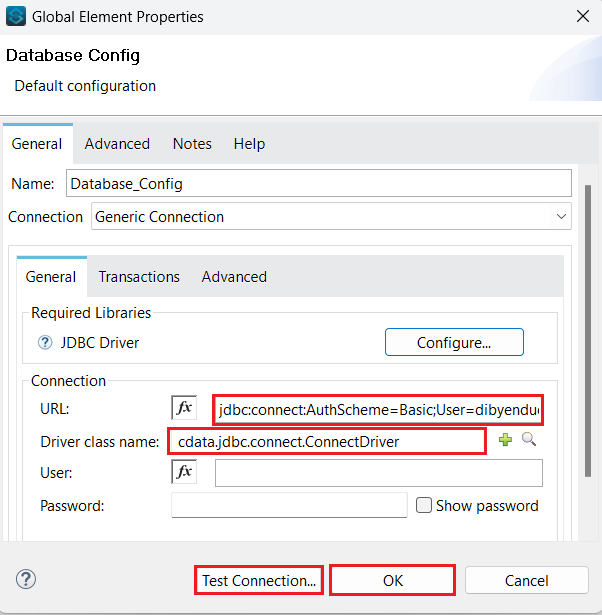
- URL: the URL for the connection, for example:
- Click Test Connection.

- If the connection is successful, provide the SQL Query Text in the editor. You can see the table metadata on the right side in the Output tab.

- In the Mule Palette, drag Transform Message to the Message Flow area.

- Click Transform Message to configure it. Change the Output as follows:
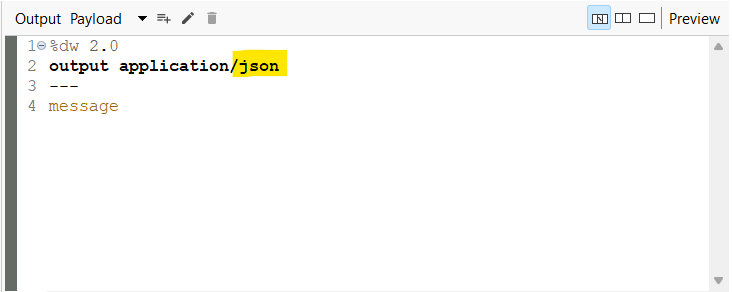
- Save your project and run it. In the console, Mulesoft starts initializing the dependencies.
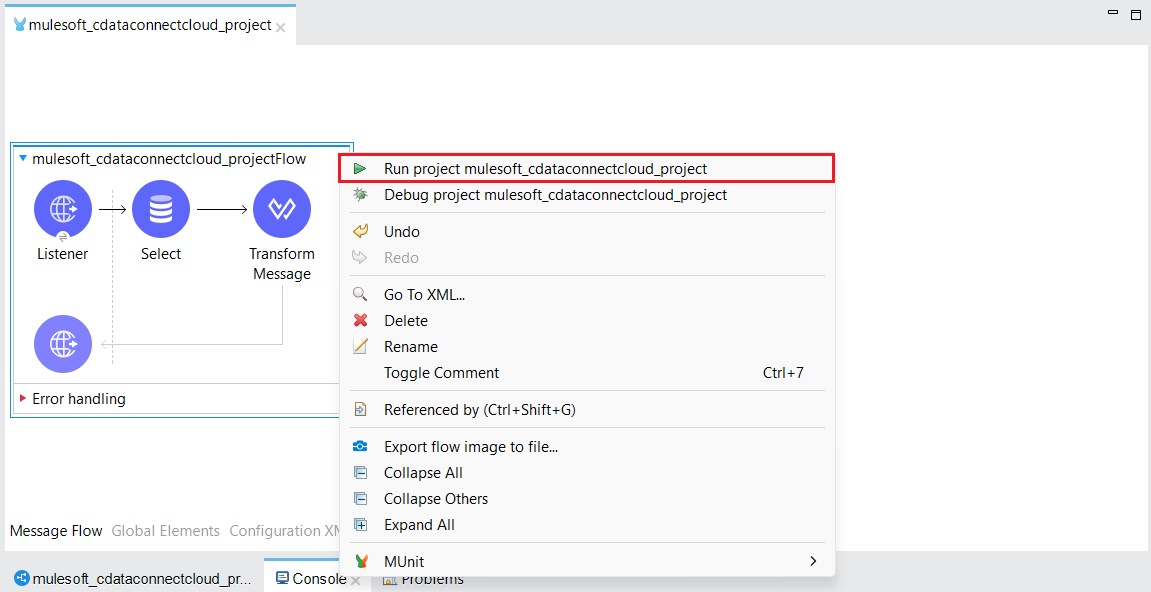
- Once you see the message, "Message source 'listener' on flow your_project_name successfully started", you can start querying your data at the endpoint you provided.

- Query to check out the data using the Postman application (as shown below).
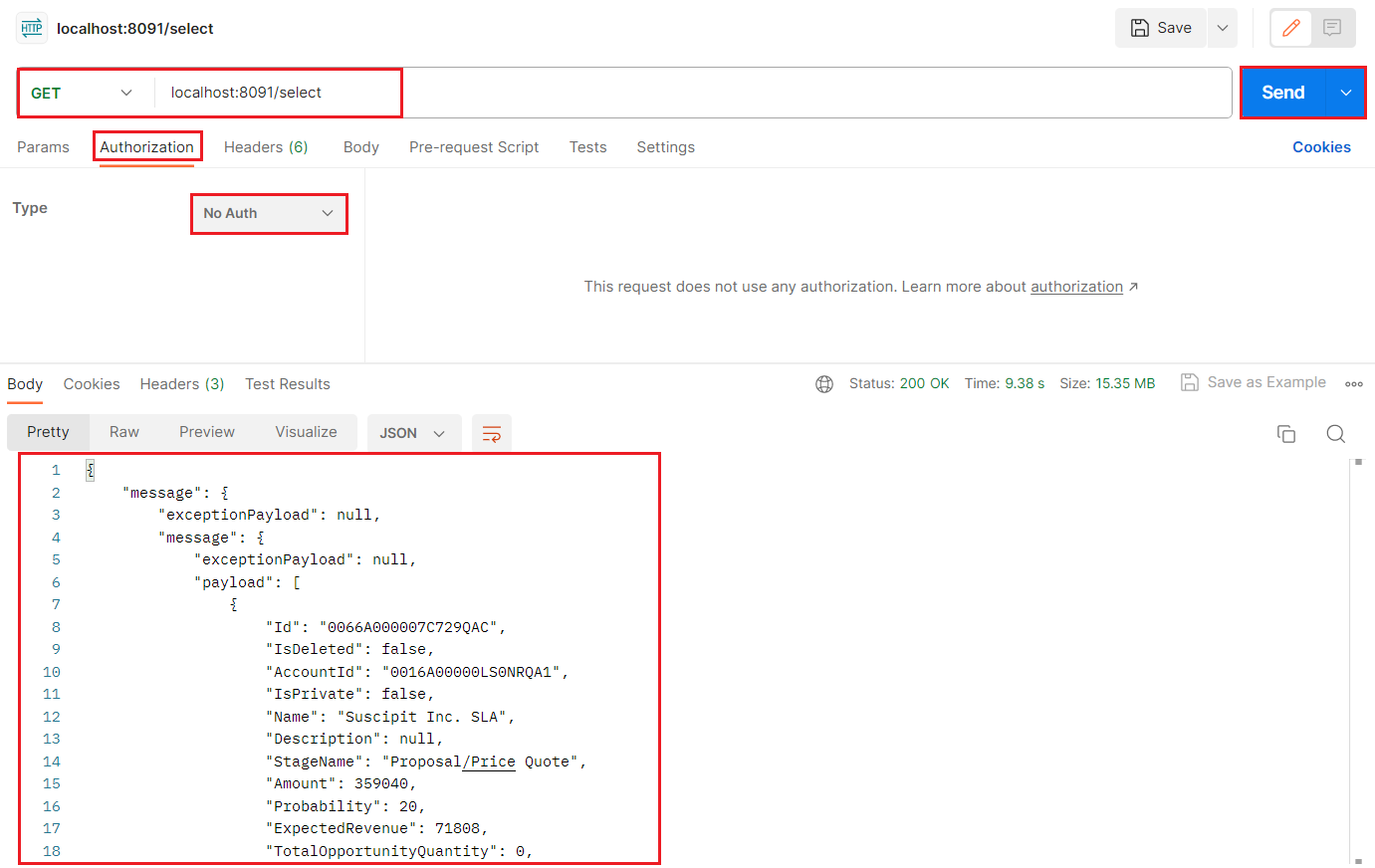
SQL Access to SAP Ariba Source Data from Cloud Applications
Now you have a direct connection to live SAP Ariba Source data from MuleSoft Anypoint Platform. You can create more connections to ensure seamless data flow, automate business processes, and manage APIs - all without replicating SAP Ariba Source data.
To get real-time data access to 100+ SaaS, Big Data, and NoSQL sources (including SAP Ariba Source) directly from your cloud applications, explore the CData Connect Cloud.

